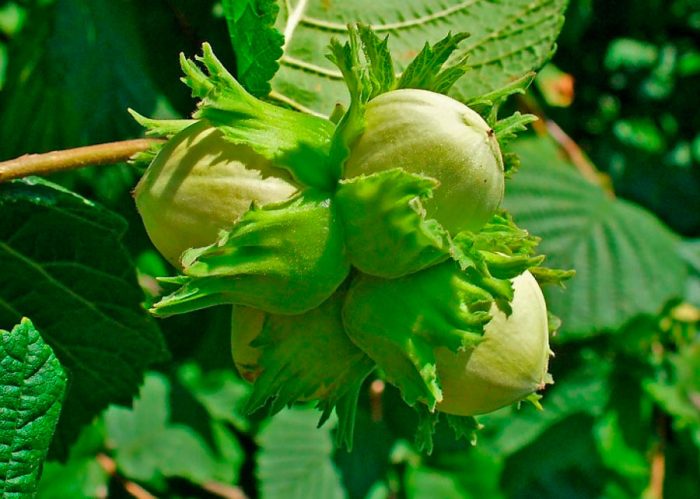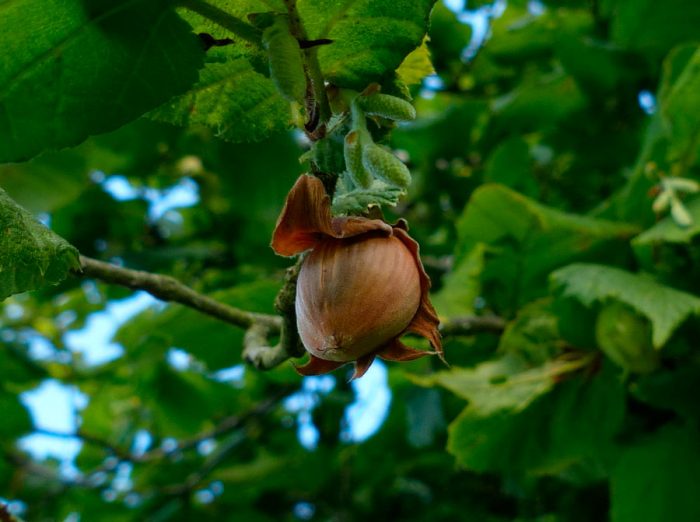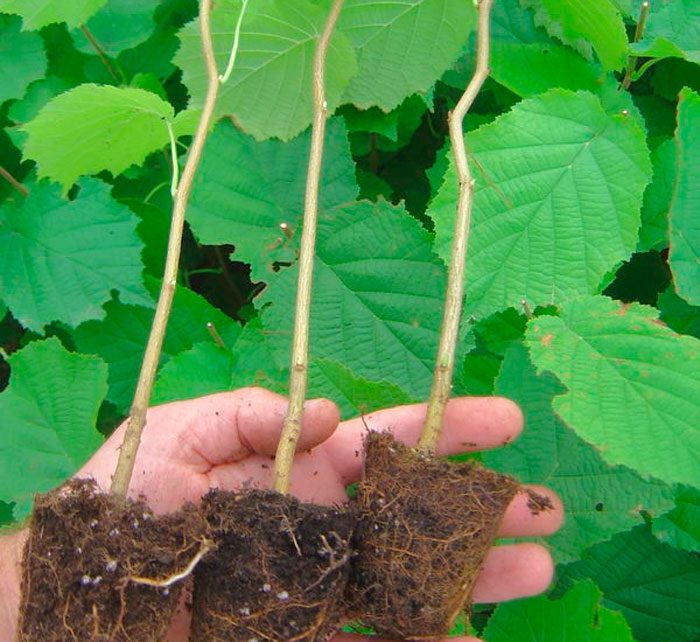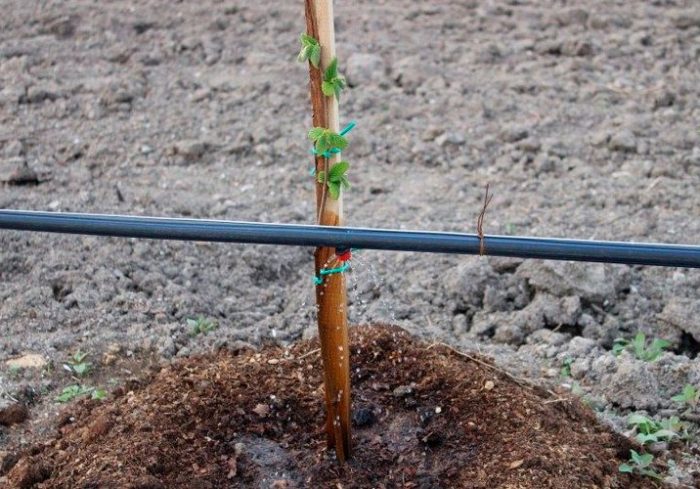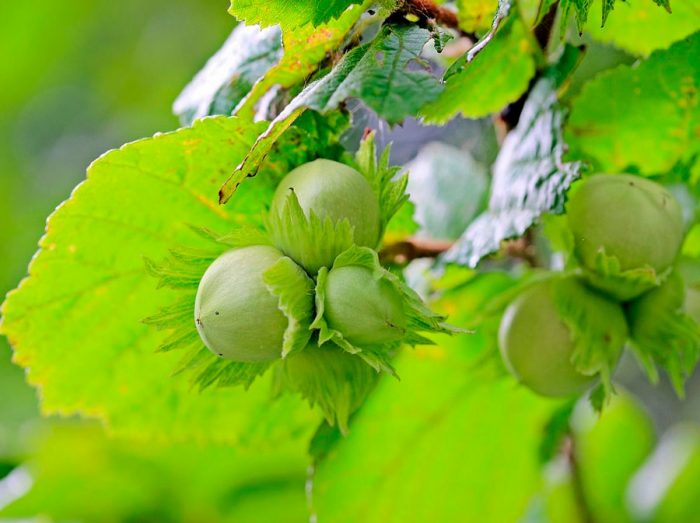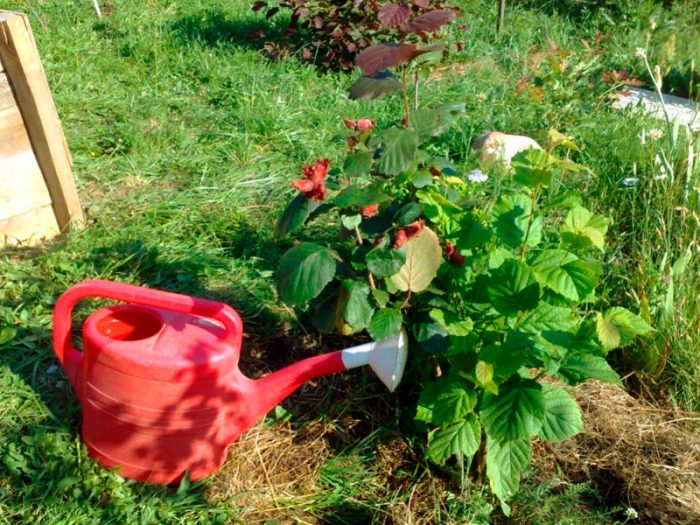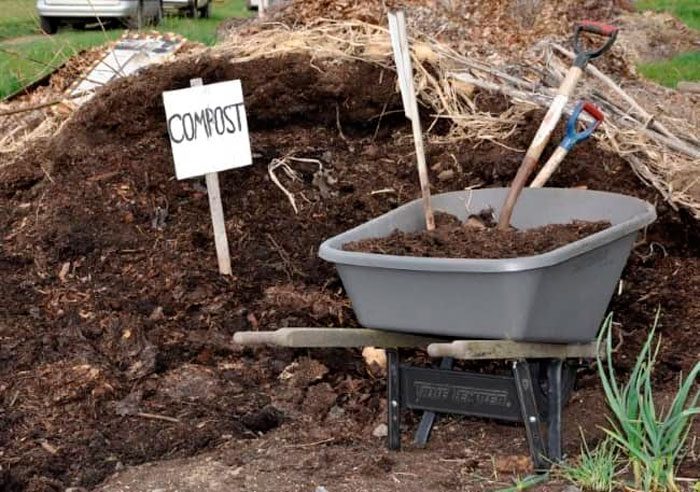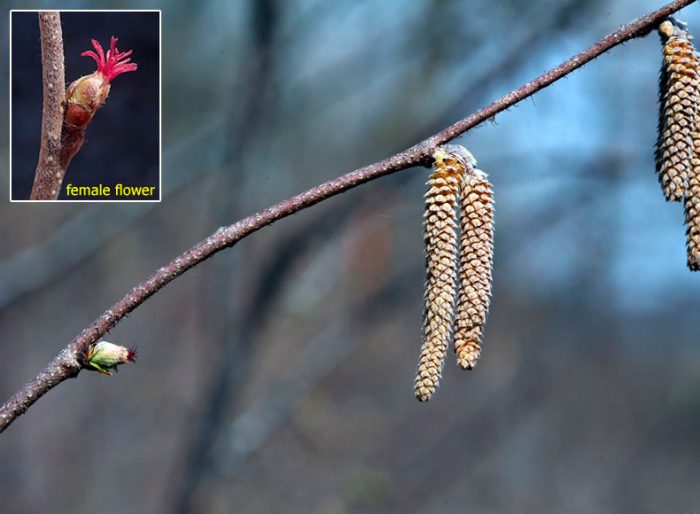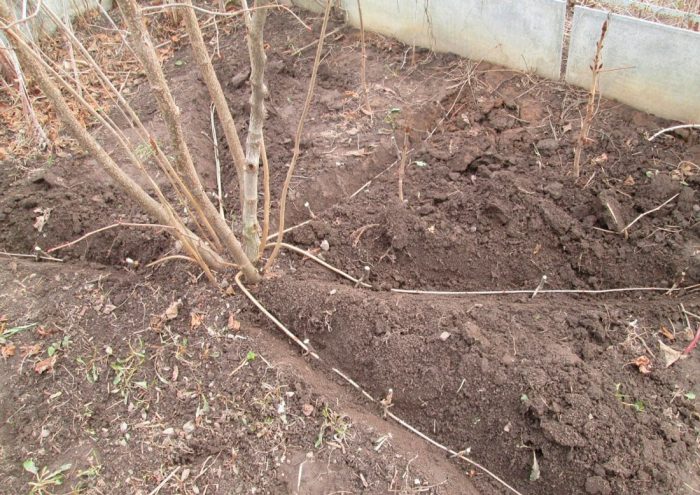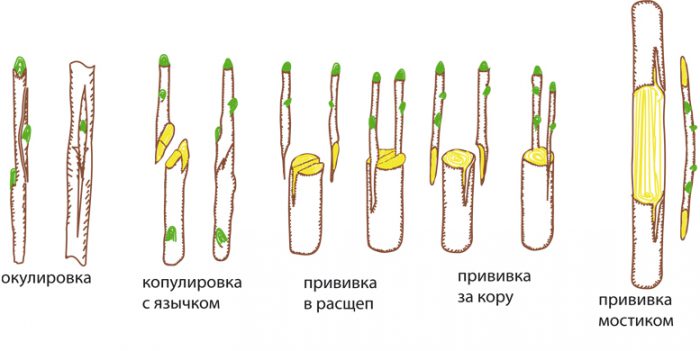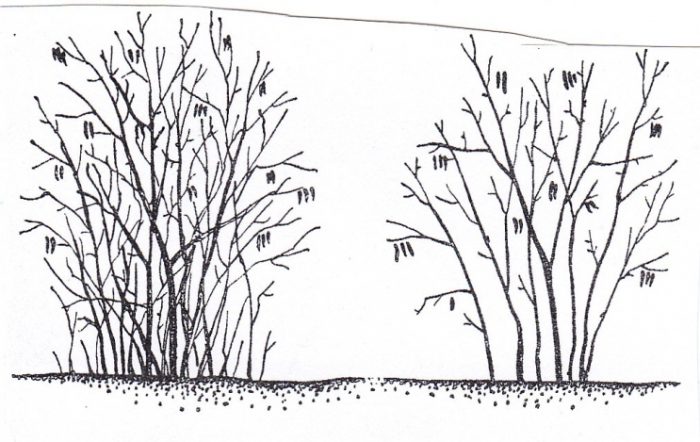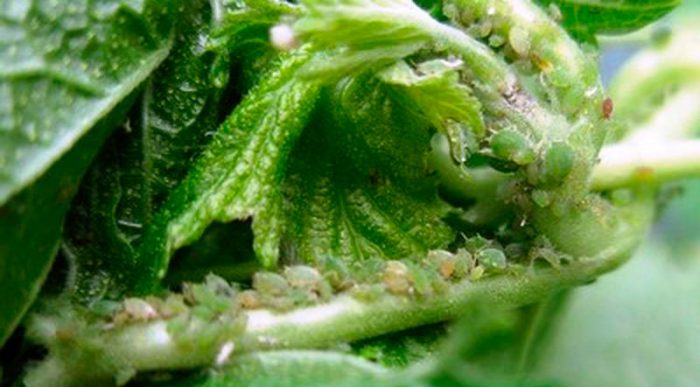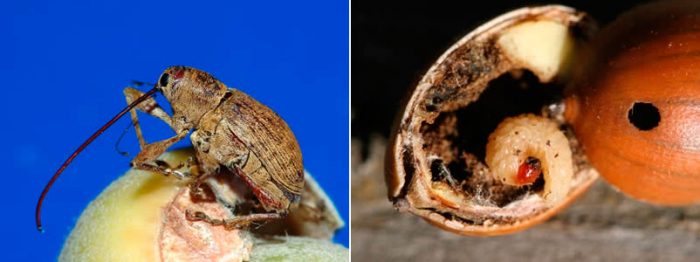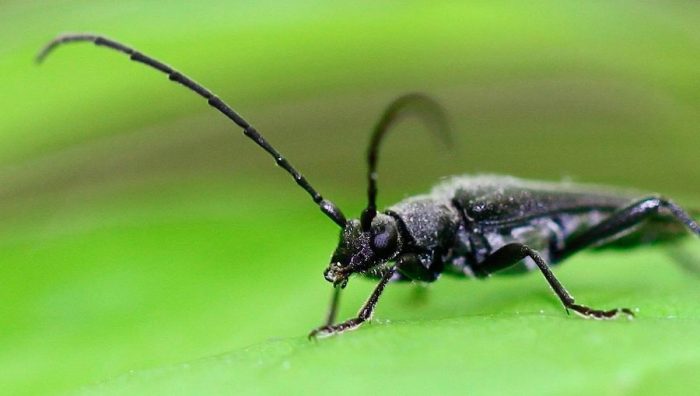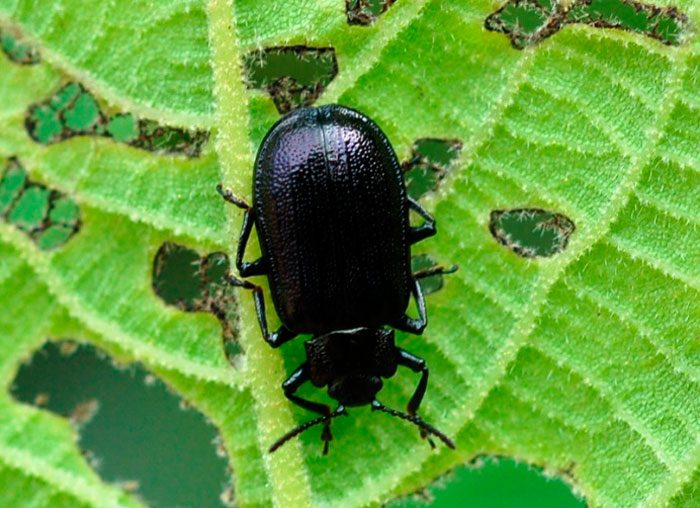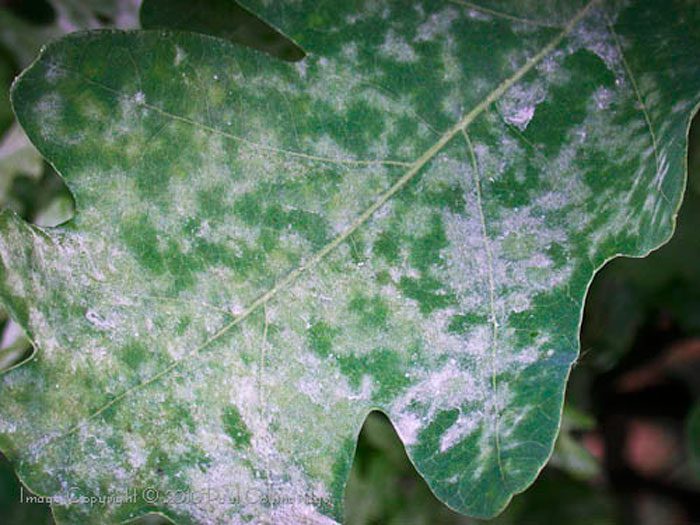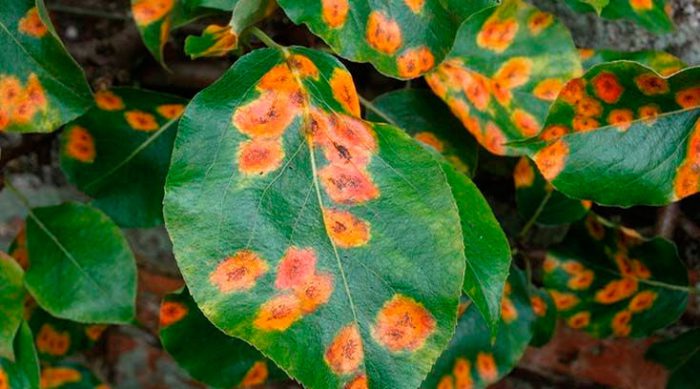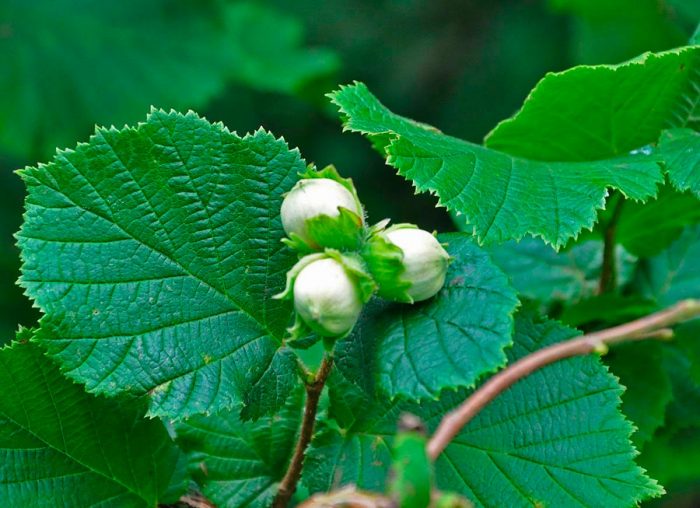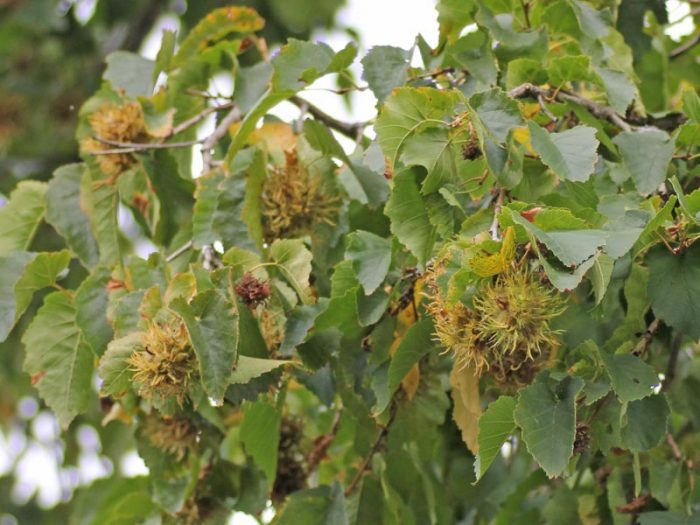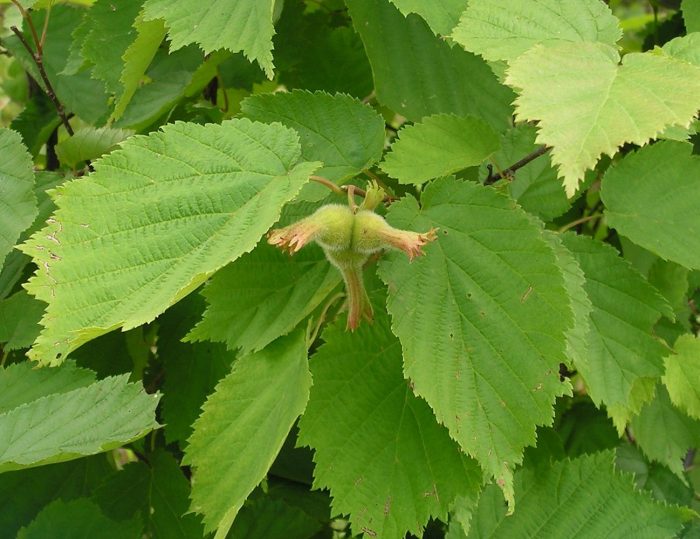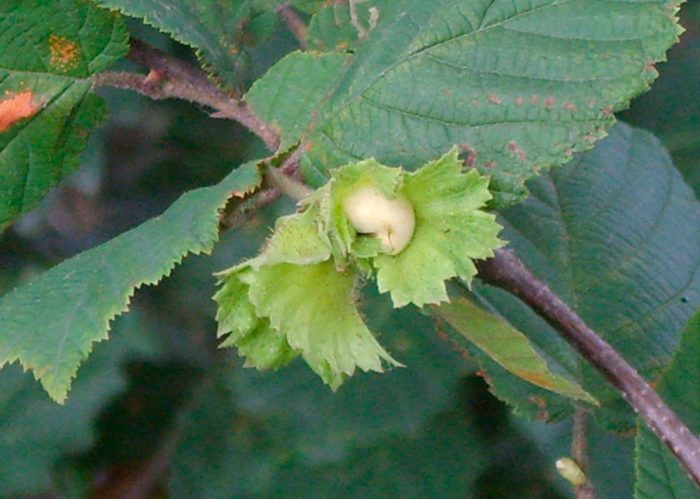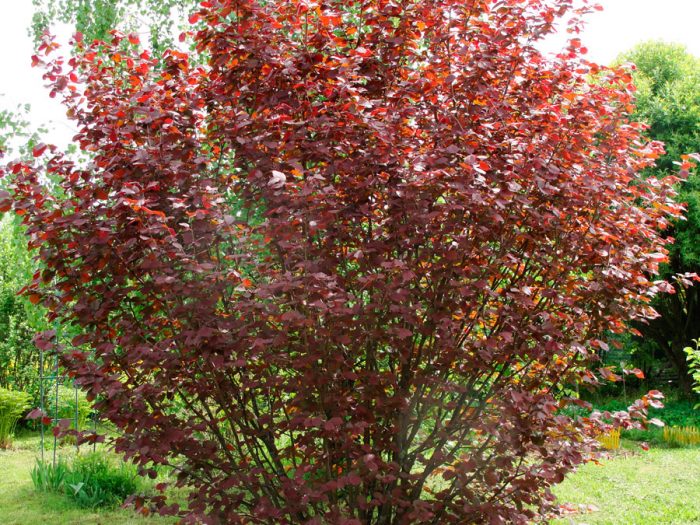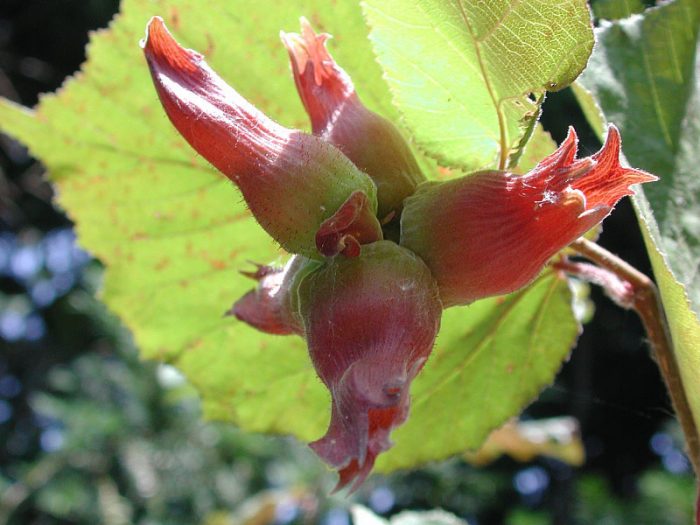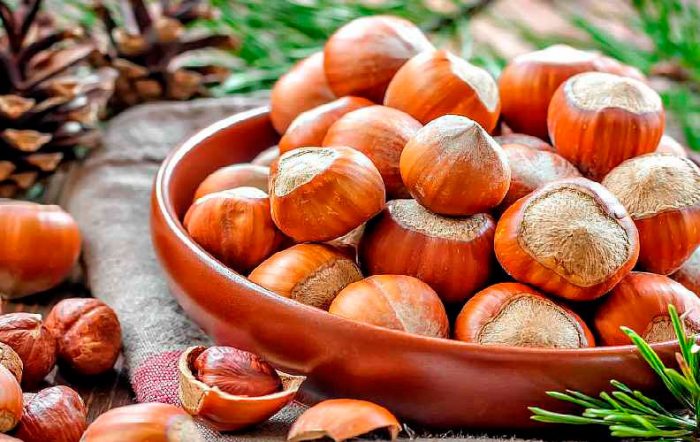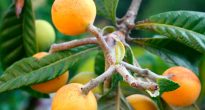Hazel or hazel (Corylus) is a member of the Birch family. This genus is represented by deciduous trees and shrubs. It unites about 20 species. They are found naturally in North America and Eurasia. Moreover, in coniferous-deciduous forests, they form an undergrowth. The most popular among gardeners is the type of hazelnut, or common hazel. The following cultural species are often called hazelnuts: large hazel, Pontic and ordinary. The hollow is one of the oldest cultivated plants in Europe. For many centuries, hazel was cultivated in Spain, France, Great Britain, Turkey, Italy and Germany. On the territory of Russia, hazel fruits appeared in 1773 in the process of exchange for velvet and leather. The word hazel comes from "lѣsk", which means hazelnut.
Content
Features of hazel
Hazel is represented by shrubs and trees. Plant height can be up to 7 meters. Its crown shape is ovoid or spherical, while its top is conical. Large leaf plates of a round or wide oval shape have a serrated edge. The flowers are monoecious as well as unisexual. So, male flowers begin to form in the fall and form fluffy cylindrical earrings on short branches. They open in the spring, even before the leaf plates appear. Hazel trees bloom in the last days of March or the first days in April. During it, a lot of pollen is formed; it is considered the main food for bees after a long winter. During flowering, the plant is decorated with golden earrings, as well as flowers. The fruit is a not very large (about 20 mm in diameter) single-seeded nut, brown-yellow in color and spherical in shape.It is surrounded by a plyusa (tubular incised cover), and also a woody pericarp. Fruit ripening is observed in August.
This culture prefers to grow in regions with a subtropical and temperate climate. Hazel plantations are located in the southern part of Europe, in Turkey, Azerbaijan, Ukraine, Cyprus, Georgia, Belarus, and also in central Russia. However, in private gardens, this culture is much less common than sea buckthorn, hawthorn, bird cherry, wild rose, actinidia, etc.
Planting hazel in the garden
What time to plant
Hazel in open ground can be planted in spring, before sap flow begins, and in autumn - 15–20 days before the onset of stable frosts. However, it should be noted that it is better to plant in the autumn.
When looking for a suitable site for planting, it should be borne in mind that it must be protected from drafts and be moderately lit. As for the groundwater, it should be no higher than 150 cm from the surface of the site. An excellent location is located in close proximity to the southern or western wall of the building. For planting, those places in which the accumulation of melt water is observed in spring are not suitable. You also need to take into account that the distance between the nearest large tree and the seedling should be from 4 to 5 meters, since the optimal feeding area of this plant is 16-25 m2... It must be remembered that the soil on the site should not be heavy, poor, loamy or waterlogged. Loose and light soil rich in humus is best suited for planting this culture, while it should be slightly acidic or neutral.
If you plan to plant several hazels at once, it is recommended to dig deeply the entire area before this procedure.
Planting hazel in autumn
The selected seedling should be free of foliage. It should have 3 or 4 powerful stems, reaching at least 10-15 mm in diameter. Moreover, its root system must be very well developed. The roots should be at least half a meter in length, but immediately before planting, they are shortened to 0.25 m.When planting several specimens, the distance between them in a row should be from 4 to 5 meters, with a row spacing of about 6 meters. Preparation of pits for planting should be done 4 weeks before the day of disembarkation, during which time the soil in them will be compacted and settle well. In the event that the soil on the site is saturated with nutrients, then the width and depth of the pit should be only 0.5 m.If it is poor, then the width and depth of the pit should be increased to 0.8 m. Before planting, the pit should be filled with nutrient soil mixture: the soil from the upper fertile layer must be combined with 2 tbsp. wood ash or 200 grams of superphosphate and 15 kilograms of rotted manure. It will be very good if you add a few handfuls of soil taken from under forest hazel to it.
In the middle of the pit, a mound should be formed, on which the seedling is installed. Before planting hazel, do not forget to lower its root system into a clay-dung chatterbox. It should be noted that after planting, the root collar of the plant should rise 50 mm above the surface of the site. The pit must be filled, after which the surface of the near-stem is well compacted. A stake must be installed near the seedling and a garter must be made. The planted plant needs abundant watering, while 30–40 liters of water are poured under 1 bush, even if the planting was carried out in moistened soil. After the liquid is completely absorbed into the soil, the surface of the trunk circle should be covered with a layer of mulch (humus, sawdust or peat), while its thickness should be 30–50 mm.


Watch this video on YouTube
How to plant hazel in spring
In the spring, the hollow is planted in the same way as in the fall.However, in this case, it is recommended to prepare the pit for planting in the autumn, so that during the winter the soil can be well compacted and saturated with moisture.
In order for the hazel to pollinate accurately, experts advise planting at least 3 specimens on the site, while it is better if they are all of different varieties. Also, do not forget to pour a few handfuls of soil from under the forest hazel into the pit during planting of the plant, since it contains fungi that are very favorable for this culture. At first, it is recommended to protect the seedlings from the direct rays of the spring sun, for this shading them.
Hazelnut care
There is nothing difficult in growing hazel. And in order to simplify your task as much as possible, it is recommended to sow lupine, mustard or oats with vetch in the trunk circle. When such grass is cut, it will create a wonderful mulch layer. Also, the soil in the near-trunk circle, if desired, can be kept under black steam, while it is necessary to periodically loosen it to a depth of 40 to 70 mm, removing all weeds. In addition, it will be necessary to systematically remove root shoots, while taking into account that it is much easier to get rid of offspring while they are still weak enough. To do this, the offspring should be excavated and cut off where it grows from the root of the tree. Places of cuts should be sprinkled with crushed charcoal.
How to water
The hollow grown in the garden needs timely watering. Seedlings planted in open ground should be watered only 7 days later. If the plant lacks water, this will have an extremely negative effect on the formation of flower buds, as well as on the ripening of fruits. During the growing season, 5 or 6 waterings will be enough for the plant, while 60–80 liters of water should be poured under an adult tree at a time. If there is a drought in the summer, then the number of watering should be increased, since this plant is moisture-loving. But if the summer turned out to be rainy, then you won't have to water the hazel at all. On average, watering is arranged once every 4 weeks. Pour water under the tree in parts, because it must have time to be absorbed, and not stand for hours in a puddle. It is recommended to loosen the soil surface around the plant at the next knocks after watering or rain.
Fertilizer
A hazel tree growing in a garden needs timely feeding. In the autumn, the tree needs phosphorus and potassium, for this, 1 time in 2 or 3 years, 20 to 30 grams of potassium salt, 3-4 kilograms of manure and 50 grams of superphosphate should be introduced into the trunk circle. In spring, such a culture needs nitrogen, so after the buds swell, 20 to 30 grams of urea or ammonium nitrate should be added to the soil under the tree. The hollow also needs nitrogen in July, at this time it is needed so that the ripening of the fruits occurs simultaneously. It is recommended to feed young trees with organic fertilizers (rotted manure or compost). Such feeding should be carried out 1 time in 2 or 3 years, while 10 kilograms of organic matter should be applied under one tree.
How to care during flowering
If the plant develops normally, then it will definitely bloom. Flowering begins in April, with flowers blooming before the foliage opens. After the air in the street warms up to 12 degrees, hazel catkins begin to grow actively, while every 24 hours their length increases by 30 mm. It should also be noted that the drier the air is, the faster the earrings will grow. After their length is equal to 10 centimeters, they become loose, and the spreading of pollen begins. The duration of this dusting is 4–12 days. The female flowers remain open for 14 days. Pollen from male flowers gets on female flowers, while she can fly not only from her own, but also from a nearby tree.It is with this that the recommendation is connected that at least 3 specimens of hazel should grow on the site.
Breeding hazel
There are several ways to propagate a hollow: by layering, grafting, dividing the bush, seeds, offspring and cuttings. The generative method of propagation is mainly used by breeders to obtain new varieties that will be adapted to certain climatic conditions. But amateur gardeners, as a rule, do not grow hazel from seeds, because it takes a very long time, and only 1 seedling out of 1000 grown can retain the varietal characteristics of the parent plant.
Reproduction by branches
Using generative propagation methods, you can completely preserve the varietal characteristics of the plant. For propagation of hazel, horizontal layers are used. To do this, at the beginning of spring or in late autumn, you need to choose annual branches, which should be low-growing. Shallow grooves are made under them (depth from 10 to 15 centimeters) into which these branches fit. They need to be fixed and slightly shortened the upper part, which remains above the ground. Do not fill the grooves with soil. Over time, vertical shoots will grow from the buds located on the branches. All leaf plates must be removed from the bottom of the grown shoots, and they will also need several hilling to the middle. Over time, the processes will form their own roots, they can be transplanted to a new place. Transplanting such seedlings to a permanent place can only be carried out after 1 or 2 years, since they need to be grown.
By the same principle, hazel can be propagated by arc layers. In springtime, the selected branches should be bent in an arcuate manner to the soil. In the place where the branch touches the ground, the bark must be incised. Then the branch is fixed in a pit, the depth of which should be from 0.2 to 0.3 m, after which it is filled with soil so that the upper part rises above the surface of the site, while it needs a garter to a peg installed next to it. The cuttings that have given the root in the autumn must be cut off from the parent tree, after which it is dug up and planted for growing to another place. It can be transplanted to a permanent place after 1 or 2 years.
You can also easily propagate the hollow and vertical layers. When rejuvenating pruning is carried out in the spring, you need to find hemp of sufficiently large branches and wrap them tightly with foil at a height of 0.5 m.This helps to awaken dormant buds and they begin to grow. After the height of the grown young shoots is 15 centimeters, they should be hilled with humus to a height of 40-50 mm. But before that, do not forget to bandage them at the very bottom, but use a soft wire for this. After the length of the shoots reaches 0.2–0.25 m, they are hilled with humus to a height of 8 to 12 centimeters. And after their length becomes equal to 0.3–0.35 m, they are hilled to a height of 0.2 m, and the surface around them is covered with a layer of mulch. When the shoots are spud the third time, you need to remove the film. During the summer period, the bush must be provided with regular watering and weeding. Do not forget, before starting hilling, each time tear off all the lower leaf plates from the shoot. In the autumn, you need to very carefully dig out the shoot, while trying not to injure the adventitious roots. Those layers that were given by the roots should be broken off in the place of the constriction. The same shoots that gave a small number of roots should not be separated.
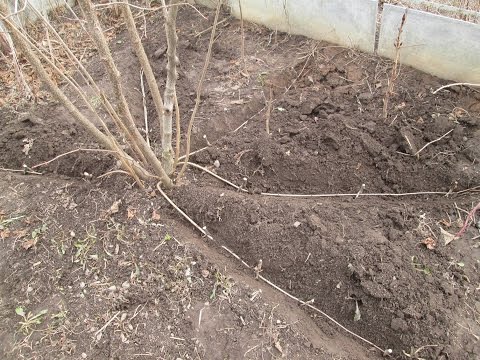

Watch this video on YouTube
Reproduction by offspring
Hazel shoots grow 100 cm in diameter from the trunk. The first offspring appear 1 or 2 years after planting the seedling, they grow from dormant buds located on the root system, while they will appear from the soil at a distance from the parent bush.Hazel can be propagated by stripping - these are two- or three-year-old offspring that grow on the periphery. It is necessary to disconnect such a cut from the rhizome with an ax, after which it is transplanted to a school for growing. If desired, they can be planted in a permanent place, but in this case, 2 or 3 peels should be placed in one planting hole.
Reproduction by grafting
Also, hazel can be propagated by grafting. A wild hazel seedling can be used as a stock. However, experts recommend taking a bear nut seedling as a rootstock, which does not give root suckers. Inoculation is carried out in the summer by the method of budding with a sprouting eye or in the spring by the cutting method in the butt, behind the bark or in the split. As a scion, cuttings prepared from the middle part of the stem should be used, you can also take the apical ones. Cuttings are harvested in winter. They should be stored until spring by placing them in a snowdrift or in a refrigerator.
Reproduction by dividing the bush
Reproduction of a hollow by dividing a bush is also a fairly simple procedure. The bush extracted from the ground should be divided into several parts, while on each division there should be roots reaching 15–20 centimeters in length. Places of cuts must be sprinkled with crushed coal, and then the separated parts are planted in pits, which must be prepared in advance.
Wintering hazel
For the first 2 or 3 years, young bushes should be wrapped with lutrasil or spunbond for wintering. Some gardeners cover the hollow in a different way. To do this, they lean young bushes to the surface of the site and cover them with spruce branches. In this case, the stems not only do not freeze, but also do not get injured. Mature trees can hibernate without shelter.
Pruning hazel
You can trim hazel in the winter. But it is best to do this in the spring, late in flowering. The fact is that during flowering, the plant will shake during the pruning process, which will have an extremely beneficial effect on the effectiveness of pollination.
Pruning rules
Hazel can be cultivated like a tree on a trunk, the height of which can vary from 0.35 to 0.4 m. However, it is easier and more convenient to care for a hazel formed in the form of a bush. 7 days after planting the seedling in the garden, it should be shortened to 0.25–0.3 m. During the summer period, shoots should grow on the bush, which should not be removed, it must be remembered that hazelnut fruiting is observed on annual wood. With the onset of spring, you need to start forming a bush. All but the 10 most powerful shoots must be removed. The remaining shoots should grow from the center of the bush in different directions at a distance from each other.
All injured, competing, diseased, weak and deformed stems must be trimmed. Make sure that the bush does not thicken. In the fourth year after planting the seedling in the soil, its fruiting will begin. At this time, it is imperative to make both thinning and sanitary pruning of the bush on time. When the age of the tree reaches 18–20 years, its yield will begin to decline, in order to prevent this, they resort to anti-aging pruning. Every year, 2 or 3 old trunks must be cut into a stump, and they must be replaced with the same number of basal offspring, which should grow close enough to the center of the bush. Young skeletal branches need to be shortened a little, as this helps to stimulate the growth of lateral shoots on them.
If you grow a hollow in the form of a tree, then 7 days after planting a seedling in open ground, all the stems should be removed from it, only the trunk should remain. As soon as new stems appear, you will need to trim those of them that are located at the bottom of the trunk. And in its upper part, it is necessary to form 4 or 5 skeletal branches. Remember that it is very important to cut out all root growth in time.
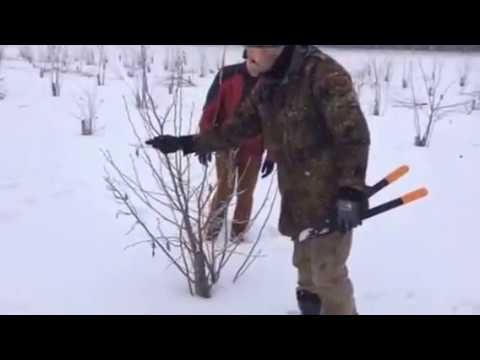

Watch this video on YouTube
Pests and diseases of hazel with a photo
Hazel pests
Hazel can be harmed by such insects as: leaf beetle, aphids, nut weevil, barbel, and also a kidney mite.
Kidney mite
A bud mite is a small insect measuring 0.3 millimeters in length. For the winter, it hides in the hazel buds, while in the spring it makes egg-laying in them. Those buds where the tick lives can be easily distinguished from healthy ones. So, they swell greatly and become similar in size to a large pea. Then, when healthy buds open, those that have become a “house” for pests dry up and fall off.
Aphid
Aphids are a very small sucking insect that sucks the cell sap from the tree. It should also be remembered that this pest is the main vector of viral diseases. It is quite difficult to notice aphids on hazel, which is the main danger. Because of such a pest, foliage twists, buds and stems are deformed, they begin to develop relatively slowly, while the fruits do not fully ripen.
Nut weevil
The walnut weevil is a brown beetle up to 10 mm long. The caterpillar of such a pest has a milky-yellow body, and a brown-red head. His female makes her eggs in immature fruits, and her larvae eat the pulp of the nut. If the tree is very badly affected, it is possible that up to half of all fruits will be spoiled.
Walnut (hazelnut) barbel
The hazelnut (walnut) barbel is an extremely dangerous harmful insect, which is a black bug, reaching 1.5 cm in length, its legs are yellow. The larvae gnaw at the core of the stems, after which they begin to dry out, while the upper leaf plates turn yellow and curl.
Nut leaf beetle
The nut leaf beetle is a beetle, reaching 0.6–0.7 cm in length, its elytra are purple in color. This leaf-gnawing harmful insect is the most dangerous. The larvae of this insect are colored dark green, so it is almost impossible to see them against the background of the foliage on which they live and develop for a long time. This insect harms alder, hazel and willow.
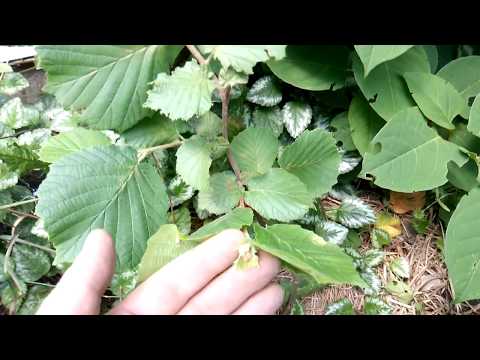

Watch this video on YouTube
Hazel disease
Hazel has a relatively high resistance to disease, and it only suffers from rot of branches, rust and powdery mildew.
Powdery mildew
Powdery mildew is a fairly common disease that any gardener is familiar with. In the affected plant, a whitish bloom forms on the surface of the stems and foliage, after some time it thickens and changes its color to brown. The infected parts of the plant stop growing, they turn dark and die off. Ovaries do not form on the inflorescences, while the frost resistance of the tree is greatly reduced.
Rust
Rust is a fungal disease. In the affected plant, bumps of a dark red color appear on the front surface of the foliage, while pustules of an oval or round shape are formed on the seamy surface. Over time, the spots become streaks, with yellowing and foliage flying around.
White rot
White rot can affect the plant in various ways, namely, as peripheral rot or as mixed rot of branches. In both the first and second cases, the plant can be severely damaged, from which in some cases it dies.
Hazel processing
If you found pests on the bush, then it is recommended to cover the soil under it with polyethylene, after which the plant must be shaken until all the insects fall from it onto the film. When there are a lot of pests on the bush, it should be sprayed with a solution of an insecticidal drug, while remembering that sucking insects are eliminated with the help of acaricide. The best result is shown by such products as: Actellik, Karbofos, Chlorofos and others of similar action.
If hazel is severely affected by a fungal disease, it must be treated with fungicidal preparations, for example: copper sulfate, Bordeaux liquid and others made on the basis of copper. In order to prevent fungal diseases, it is recommended to follow the agrotechnical rules of this culture, and also to properly care for the plant.
Types and varieties of hazel with photos and names
It has already been mentioned above that there are about 20 species of hazel. Moreover, cultivated species have a large number of varieties, varieties and hybrids. Below will be described those of them that are most popular with gardeners.
Common hazel (lat.Corylus avellana)
The height of this multi-stemmed shrub is 4–6 m. The crown is spreading and wide, reaching 4 meters in diameter. There is pubescence on the surface of the stems. round sheet plates are 9 centimeters wide and 12 centimeters long. Such a plant blooms before the foliage opens. Ball nuts, reaching 15 mm in diameter, are covered with a brownish skin. They ripen in September. This species can be found both in natural conditions and in culture.
Hazelnut tree (lat.Corylus colurna), or bear nut
The fruits of this decorative type are very tasty. It is considered the only one of all species that is represented by trees. Its height is about 8 m, but in regions with a warm climate, such a tree can grow up to 20 m. The life span of this plant is about 200 years. Broadly ovate leaf plates are placed on petioles reaching 50 mm in length. The fruits of such a plant are large in comparison with other species, but their kernels are smaller, but much tastier than the kernels of a hazelnut.
Manchurian hazel (lat.Corylus mandshurica)
The height of such a multi-stem, strongly branching shrub is about 5 meters. Fractured bark of dark gray color. A characteristic feature of this species is the fruits and foliage of an oblong shape. The fruit has a thorny coating, so it is relatively difficult to peel them. This species is found naturally in the Far East and China.
Various-leaved hazel (lat.Corylus heterophylla)
The height of the shrub is about 300 cm. The top is truncated, and the foliage is bilobed. In the springtime, earrings of male inflorescences grow on it, and subtle buds of female flowers, painted in red, are also formed. The formation of fruits is observed in a leaf wrapper in 2 or 3 pieces. In nature, this shrub can be found in China, the Far East, Japan and Korea. The species is distinguished by its unpretentiousness to climatic conditions, and it grows well in mid-latitudes.
Red-leaved hazel (Corylus atropurpurea)
The height of such an ornamental shrub varies from 4 to 6 meters. The crown is very dense. The leaves have a dark purple color, which changes to green closer to autumn. The buds and earrings are colored maroon. Thanks to this species, a large number of hybrids were born, as well as varieties that are very popular with gardeners.
Large hazel (lat.Corylus maxima), or Lombard nut
The height of the shrub is about 10 meters. Nuts are placed in a tubular wrapper, while it is a couple of times larger than the fruits themselves. The fleshy kernels are elongated. Under natural conditions, such a hazel grows in Italy, Turkey and Asian countries.
There are also species such as: Chinese hazel, American, Colchis, horned, Himalayan, or fearsome, Siebold, etc.
In mid-latitudes, the following varieties of hazel are most popular:
- Isaevsky... This variety is among the most valuable. It is distinguished by good winter hardiness and large fruits with high taste.
- Masha... It is a hybrid of red-leaved hazel. It is distinguished by frost resistance and productivity.Medium-sized elongated nuts are very tasty, they are covered with a thin shell.
- Roman... This mid-season Italian variety is resistant to pests and diseases. Very beautiful large flat-round fruits taste great.
Even in the middle latitudes, such varieties are popular as: Ekaterina, Moscow Ruby, Pamyat Yablokov, Pervenets, Pushkin Red, Ivanteevsky Red, Kudriif, Moscow Early, Purple, Sugar, Sugar, a series of varieties Severny, Tambov early, Tambov late, Lentina, Alida, Lena, etc.
And in Ukraine and in the southern regions of Russia, such varieties are popular as: Panakhesky, Altai, Cherkessky, Kuban, Perestroika, Futkura, etc.


Watch this video on YouTube
Properties of hazel: harm and benefit
Useful properties of hazel
Hazelnuts contain many useful substances that are necessary for the human body. So, the core contains vitamins A, PP, C and E and B vitamins, as well as amino acids, fatty oils, iron, iodine, calcium, magnesium, copper, fluorine, manganese and potassium. In terms of their biological characteristics, nuts are equated to proteins, in this regard, experts advise to eat them separately from other products.
The benefits of hazelnuts:
- has a positive effect on attention and memory;
- normalizes the work of the cardiovascular system;
- helps to strengthen immunity and accelerate metabolic processes;
- has a positive effect on the body when it is depleted, and is also used to recover from a serious illness;
- it is recommended to use it for anemia, allergies, obesity, rheumatism, urolithiasis, burns, measles, anemia, epilepsy, and in order to enhance hair growth and cleanse the liver.
An infusion of hazel foliage is indicated for varicose veins, prostatic hypertrophy, thrombophlebitis and trophic ulcers. Infusion of the bark is used for diabetic retinopathy; it is also able to improve blood circulation in small vessels. And this infusion also has a vasoconstrictor effect. It is recommended to wash your hair with a decoction of plyus and bark to make it darker in color. A decoction of the leaves is able to eliminate puffiness of the eyelids and redness of the skin.


Watch this video on YouTube
Contraindications
Infusion of hazel bark and foliage contributes to an increase in blood pressure, therefore it is not recommended for hypertensive patients. Eating kernels can exacerbate neurodermatitis and other skin diseases. Also, the fruits can not be eaten with psoriasis and in the presence of individual intolerance.

